If you don’t mix your formula according to the manufacturer’s instructions, your baby risks short- and/or long-term health issues.
How to Measure Baby Formula Without Scoop
By: Suzanne Renee' - Updated December 27, 2023 - 7 Minute Read
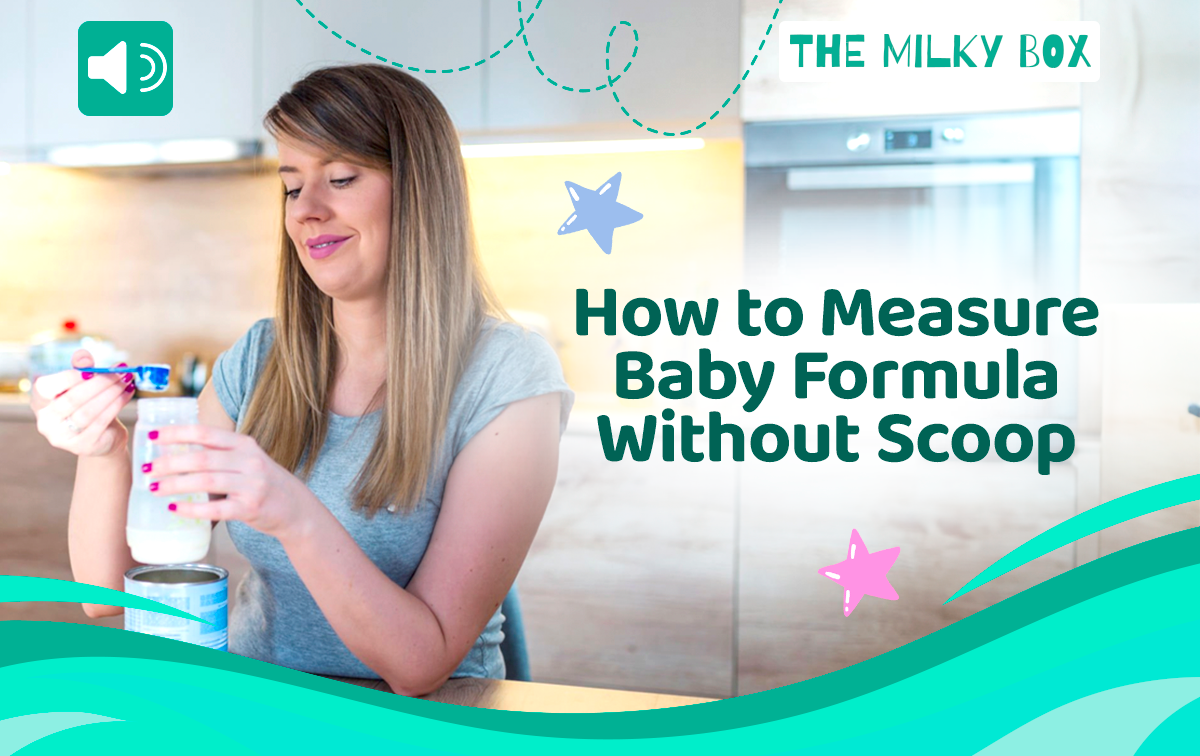
Being a parent is exhausting. Surviving on little to no sleep and to do list overload is a constant challenge. Add to that the countless small tasks on your daily agenda. Is it any wonder that some days can feel overwhelming?
In these turbulent times, even minor mishaps, such as misplacing the formula scoop for your baby's nutrition, can be incredibly frustrating. To help make your life a little easier, let's discuss in this article what you can do if you need to locate the right scoop from your formula container to create a bottle of your favorite European infant formula.
Table of Contents:
1. What Size is a Formula Scoop?
2. Why Formula Scoop Size Matters
3. Problems from Improperly Mixed Infant Formula
4. Measuring Baby Formula Without a Scoop
5. Measuring Formula Using a Measuring Spoon
6. Baby Formula Powder Measurement: Using a Scale
7. How Many Grams Are There in an Average Scoop of Formula?
8. How Many Ounces Does a Scoop of Baby Formula Weigh?
10. Frequently Asked Questions
What Size is a Formula Scoop?
European baby formula is designed to meet your baby’s unique dietary and developmental needs. A blend of vitamins, minerals, and proteins is selected in perfect proportion.
Each brand has distinct powder-per-water ratios, meaning the individual scoop sizes will vary from manufacturer to manufacturer and stage to stage within the same brand.
The scoops in European formula may not be the same size as the equivalent alternative, especially if you use a generic or store brand.
Comparable Scoop Sizes
Many scoops that may look the same can differ by tenths of a gram. This might not seem like a substantial difference, but with many scoops and several bottles a day, the delicate nutritional balance can be put in jeopardy.
Using the wrong scoop size increases the chance that your infant is either getting more nutrients than they need or less than they need. Either option could put the health of your baby at risk.
Why Formula Scoop Size Matters
To ensure your baby receives appropriate nutritional composition and safety, European baby formula puts in place strict checks and balances in place. Every detail matters, especially the specific ratios of macro- and micronutrients.
Preparing Baby Formula
The largest concern of giving your infant improperly mixed formula is that they can experience a dangerous imbalance of nutrients.
Each brand, stage, and protein source may yield different measurements.
Problems from Improperly Mixed Infant Formula
Suppose you do not mix your baby’s formula according to the manufacturer’s instructions. What will happen? First, please do not panic; mistakes do happen. It just means you are human.
Please speak to your healthcare professional as soon as you know that your infant has been given improper amounts of baby formula, especially over an extended period.
Formula Becomes Over-Concentrated
If your scoop is bigger than recommended and your infant ingests too little water, the results can lead to dehydration, malnutrition, and poor weight gain.
⚠️ Dehydration
Excessive sleepiness, fewer wet diapers, dark urine, a dry mouth, no tears (after the first few weeks of life), or a sunken soft spot on the head all indicate dehydration. If you notice these symptoms, you should seek immediate medical evaluation of your infant.
Diluted Baby Formula
On the other hand, if the macro- and micronutrients are increased, and the amount of water does not match, the result is significant issues.
You may be tempted to dilute your baby's formula to extend its shelf life when there are shortages, but we strongly recommend against this as the risk is much too high.
⚠️Water Intoxication
A rare occurrence, but infants are particularly vulnerable. Babies that drink too much water get water intoxication, which results in abnormal electrolyte levels, primarily salt. Water intoxication symptoms include extreme fussiness, tiredness, lethargy, vomiting, and in severe cases, seizures.
⚠️ Weight Changes
When your baby’s powdered formula is not mixed correctly, this prevents your infant from getting the nutrition they need to thrive. Your baby may not gain weight as expected, and your infant may fall behind physically.
⚠️ Developmental Milestones Delays
Accidentally giving your baby diluted formula a few times will not hurt. Still, many bottles with the wrong amount will lead to a significant difference over time. Growth will slow down, eventually leading to developmental delays.
Measuring Baby Formula Without a Scoop
Take comfort in the fact that misplacing baby formula scoops happens every day. Parents reach to make the perfect bottle of European baby formula only to find the measuring scoop is nowhere to be found.
Life does not slow down for lost measuring scoops, so let's look closely at how to measure baby formula without a scoop.
By Weight and Volume
When too much or too little formula is not good enough, the most accurate replacement for your European baby formula scoop will be a kitchen scale that measures to a tenth of a gram.
Using a kitchen scale to be as precise as possible ensures that your little one receives the perfect balance of nutrients needed for physical growth and cognitive development.
Measuring Formula Using a Measuring Spoon
If you cannot find the correct manufacturer-provided scoop, your first reaction is to find the next closest thing in your kitchen: a measuring spoon.
Although that ½ teaspoon in your drawer looks awfully close to your missing scoop, there is a slightly different measurement than the European portion sizes. US formulas often suggest using a rounded tablespoon. However, this is ill-advised as it does not come close to the correct amount needed to be an alternative for your manufactures scoop.
Baby Formula Powder Measurement: Using a Scale
Even though scoops may be similar sizes and appear to be the same, formula brand can vary by tenths of a gram. This may seem like a small difference but consider how many scoops your little one uses in just one bottle daily, and this minor amount adds up in a big way.
How Many Grams Are There in an Average Scoop of Formula?
European baby formula powder brands list the amount of formula (per 1 ounce of water) in grams on individual containers. These numbers will be instrumental if you wonder how to measure formula without a scoop.
We have listed each European Baby Formula carried by The Milky Box to assist with this task.
HiPP Scoop Size
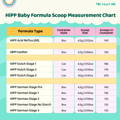
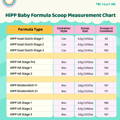
Holle Scoop Size
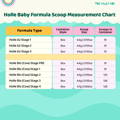
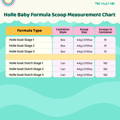
Jovie Goat Scoop Size
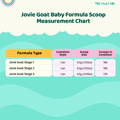
Kabrita Goat Scoop Size
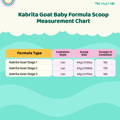
Kendamil Scoop Size
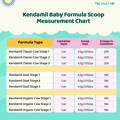
Lebenswert Scoop Size
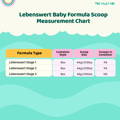
Nannycare Goat Scoop Size
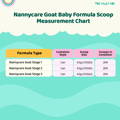
Premibio Scoop Size
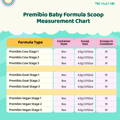
How Many Ounces Does a Scoop of Baby Formula Weigh?
A scoop of European infant formula weighs between 4.3 and 4.8 grams, approximately one-fifth of an ounce. Your scale must be extremely precise to measure baby formula in ounces accurately.
Suppose it is necessary to measure baby formula in ounces rather than scoops or grams. In that case, it might be the best practice to convert the total amount of formula required per bottle rather than every individual scoop.
We have made the conversion from grams to ounces for you to multiply by the formula portion size you need to prepare.
Measure Baby Formula
Losing the scoop that goes with your infant formula happens to all families. If you are trying to make a baby bottle without the proper scoop, you must not just grab the first measuring spoon you see.
If you have any questions or concerns about the correct amount of powder in your infant formula, you need to make a bottle without nutritional deficiencies that support your baby's health; The Milky Box is here for you.
Frequently Asked Questions
What happens if the baby formula is not mixed properly?
How much is in a scoop of formula?
The amount of powder in a scoop varies with each formula brand and often from stage to stage.
Is it Alright to measure a half scoop of formula?
No, You need to make sure you follow the manufacturers instructions. If there is too little water or too much water and not enough formula or too much formula, your baby could become very sick.
Disclaimer:
Please be aware that this information is based on general trends in babies, and it is not medical advice. Your doctor should be your first source of information and advice when considering any changes to your child’s formula and when choosing your child’s formula. Always consult your pediatrician before making any decisions about your child’s diet or if you notice any changes in your child.
Breastfeeding is the best nutrition for your baby because breast milk provides your child with all the essential nutrients they need for growth and development. Please consult your pediatrician if your child requires supplemental feeding.

Suzanne Renee' is an accomplished professional with extensive expertise in the area of infant nutrition, dedicated to promoting the health and wellbeing of children. She started this journey as a foster parent. Suzanne has emerged as a strong proponent of the European baby formula and has become a full time writer of the subject. In her free time, she enjoys camping, hiking and going to church.
Read Next:
Reviewed by Dr. Eric Wood, ND, MA

Dr. Wood is a licensed naturopathic doctor, with a doctorate degree from the Canadian College of Naturopathic Medicine in Toronto, Canada. He received his post-graduation certification in Mind Body Medicine at Harvard University.
With 15 years of experience, Dr. Wood is an Associate Professor of Holistic Nutrition at the American College of Health Sciences in Portland, Oregon. Dr. Wood is an educator, clinician, author, media figure, consultant, and owns his own holistic (naturopathic) medical practice in Ft. Lauderdale, Florida. Dr. Wood is currently researching and drafting books on cancer and pediatrics.
Outside of the medical profession, Dr. Wood loves singing with the Miami Lyric Opera and is an avid musician in South Florida. He also loves spending time with his wife and kids.

